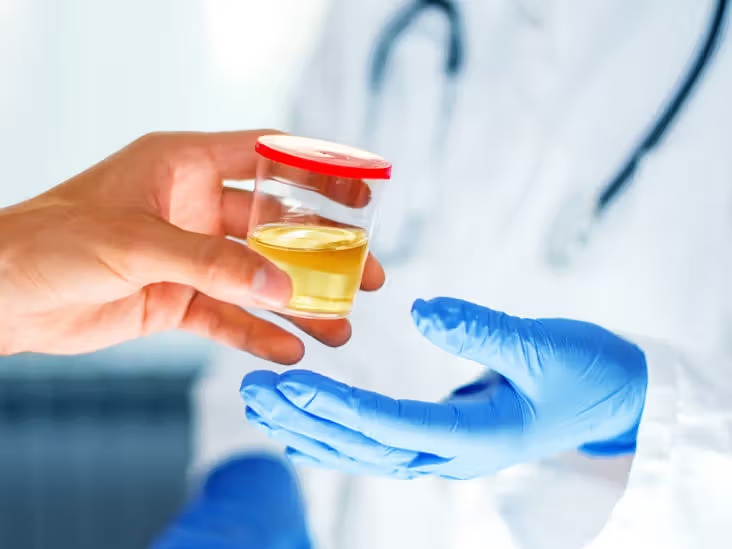This is how the AI article summary could look. Lorem ipsum dolor sit amet, consectetur adipiscing elit, sed do eiusmod tempor incididunt ut labore et dolore magna aliqua. Ut enim ad minim veniam, quis nostrud exercitation ullamco laboris nisi ut aliquip ex ea commodo consequat.
What is a urine test?

There is not a single urine test. There are several.
In this article, we will describe 3 important urine tests, and give their normal values.
Urinary dipstick
- Colour – Straw
- Turbidity – Clear
- pH = 4.5-8. This is a wide range. But urine is normally acidic (i.e. 5.5-6.5) due to metabolic activity. But a very alkaline urine (pH >9.0) may be associated with a UTI
- Specific Gravity (SG) -1.003-1.030
- Protein – Negative
- Glucose – Negative
- Ketone – Negative
- Bilirubin – Negative
- Urobilinogen = 1.7-30 µmol/L
- Blood – Negative
- Leucocyte (WC) – Negative
- Nitrite – Negative
Urinary ACR (marker of protein in urine)
Categories (levels) of albuminuria
- A1 = <3 mg/mmol. Normal, as it is normal to have a very small amount of albumin (and protein) in the urine
- A2 = 3-30. Mild albuminuria
- A3 = >30. Moderate-to-above albuminuria
- >100 = ‘nephrotic range’. Then there needs to be a good reason not to do a kidney biopsy
- >220 = nephrotic syndrome
Midstream specimen of urine (MSU; urine microscopy, i.e. looking at the urine under the microscope)
- White cells (WC) <5
- Red cells (RC) <25 (male, and non-menstruating female). Note, most humans have some microhaematuria. 10% will be positive for blood on a dipstick. This is usually not a disease, and doesn’t need further investigation
- Casts (hyaline) – 0-1
- Urine crystals – none seen
- Bacteria – none seen
Summary
We have been explained 3 important urine tests, and given their normal values. We hope it has been helpful.
